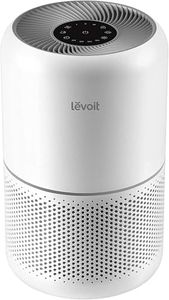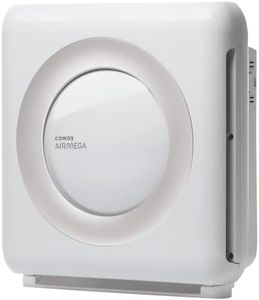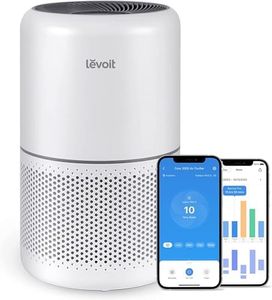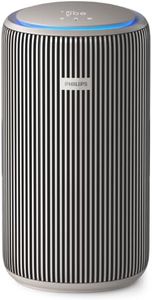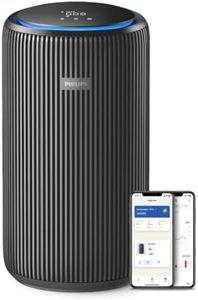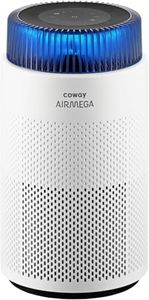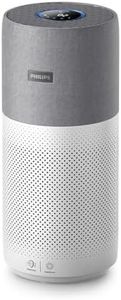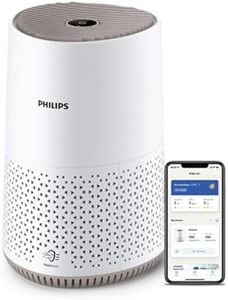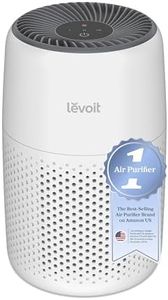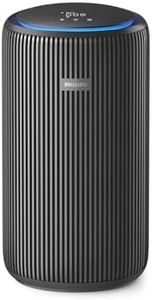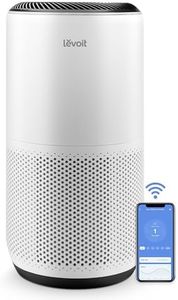We Use CookiesWe use cookies to enhance the security, performance,
functionality and for analytical and promotional activities. By continuing to browse this site you
are agreeing to our privacy policy
10 Best Energy Efficient Air Purifiers
From leading brands and best sellers available on the web.Buying Guide for the Best Energy Efficient Air Purifiers
When shopping for an energy-efficient air purifier, your main goal is to find a device that effectively removes airborne pollutants while keeping your electricity usage low. It's important to focus on both the performance and efficiency of the unit. The ideal air purifier will match the size of your space, address your key air quality concerns (like allergies, dust, or odors), and operate efficiently to avoid high energy costs. To make a smart choice, you should understand how major specifications affect real-world performance and your day-to-day usage.Clean Air Delivery Rate (CADR)Clean Air Delivery Rate (CADR) tells you how quickly the air purifier can remove contaminants from the air, measured for particles like smoke, pollen, and dust. A higher CADR means the device can clean air faster and is suitable for bigger rooms. Typically, small purifiers have lower CADR (below 100), making them better for small spaces, while medium devices range from 100–200, and large ones can go much higher (above 200). To pick the right CADR, match it to the room size where you’ll use the purifier, ensuring it’s neither too weak nor unnecessarily strong.
Energy Star CertificationEnergy Star certification indicates that the air purifier meets strict energy efficiency guidelines set by regulatory agencies. A certified device uses less power without sacrificing performance. When comparing options, look for the Energy Star label, which usually translates to lower electricity bills over time. This is especially important if you plan to run the purifier for many hours every day. Choosing a model with this certification is a straightforward way to ensure you’re balancing indoor air quality and energy savings.
Power Consumption (Wattage)Power consumption, measured in watts (W), shows how much electricity the air purifier uses during operation. Lower wattage means less energy use, but if the purifier is too weak, it may have to run longer to reach the same result. Wattage can range from below 30W for compact units up to 100W or more for larger ones. Consider your intended usage: for continuous or overnight use, prioritize lower wattage models that don't compromise on cleaning ability, making them both effective and economical.
Filtration Technology (Type of Filters)Filtration technology refers to the kind of filters used, such as HEPA, activated carbon, or UV-C. HEPA filters are highly efficient at trapping fine particles, activated carbon targets odors and fumes, and UV-C works on bacteria and viruses. Some purifiers combine filters for broader protection. The type impacts energy use—generally, purifiers with more complex filtration systems consume more power. Choose filter types that address your main concerns (for example, allergies or smoke) and balance it with the overall power usage to maintain energy efficiency.
Room Size CompatibilityRoom size compatibility indicates the maximum space an air purifier is designed to clean effectively. Manufacturers usually state the recommended coverage area in square feet or square meters. Using a purifier in a space larger than recommended reduces effectiveness, while using an oversized unit in a small room wastes energy. Measure your space and select a purifier that matches or slightly exceeds your square footage for the best blend of air quality improvement and energy efficiency.
Fan Speed Settings and ModesFan speed settings and operational modes let you control the air purifier’s output and noise level. More speed options or eco/auto modes allow you to use higher settings during high pollution and lower, quieter, or energy-saving modes otherwise. This flexibility not only tailors air cleaning to your needs but also minimizes energy use when less power is needed. Look for models with automatic sensors or eco modes for the most efficient everyday operation.


